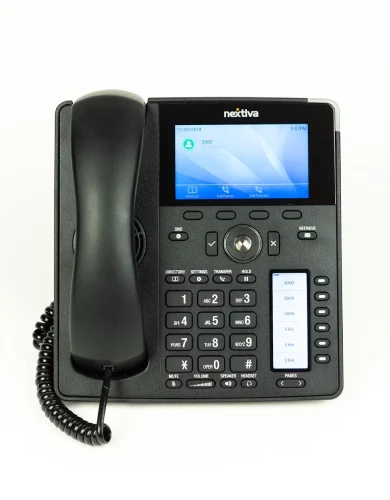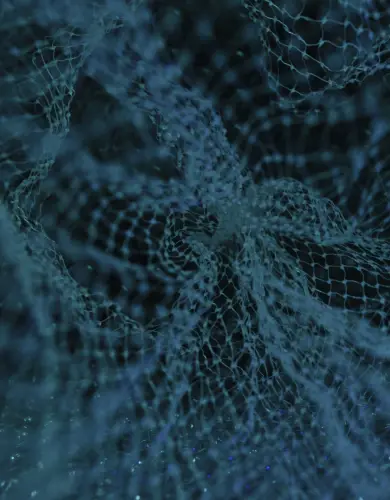Dark fibre networks
As emerging technologies keep voraciously increasing demand for bandwidth, surplus fibre strands owned by network operators are proving invaluable.
These idle, unlit, “dark fibres” can be leased to businesses who want to build their custom networks, delivering unmatched performance and security, with financial firms, NHS hospitals, research centres and tech enterprises leading adoption.
This article delves into leasing these dark fibres, explaining how they work, who they are for and finally, who the main players are.
Contents:
- What is dark fibre?
- Who is dark fibre for?
- Businesses using dark fibre
- How did dark fibre arise?
- How does leasing dark fibre work?
- Pros and cons of dark fibre
- Dark fibre vs managed services
- UK dark fibre providers
What is dark fibre?
Dark fibre refers to unused fibre optic strands within the UK’s extensive fibre network that businesses can lease for exclusive use.
These strands are owned by network providers and remain idle (“dark”) until businesses install the necessary equipment to “light” them and enable data transmission.
By leasing specific portions of these fibres, businesses can build private, customisable networks with full control over bandwidth, routing, and performance.
However, this control comes with significant responsibility. Businesses must handle all aspects of network operation and maintenance, including equipment installation, troubleshooting, and ensuring reliable performance.
Which type of business is dark fibre for?
Dark fibre is a niche connectivity solution for businesses and institutions that need (and can afford) the highest-performance connectivity across their sites and data centres hosting critical cloud services.
It is ideal for businesses that demand the highest levels of broadband cybersecurity, complete customisability, and exceptional performance, including speeds exceeding 10 Gbps and ultra-low latency.
However, choosing dark fibre means taking on the network operator role, which comes with significant costs and responsibilities. Businesses must pay fibre tax, purchase and install all necessary hardware, and hire engineers and technicians to handle maintenance, operation, and support.
Alternatively, businesses can hire a third-party operator to manage their dark fibre or opt for a managed fibre service. See our dark fibre vs managed service section to understand their key differences.
In either case, the annual costs can often exceed tens or even hundreds of thousands of pounds, making dark fibre a solution that only a select group of businesses can fully utilise.
Businesses using dark fibre
The complexity and cost of dark fibre leased only to big and specialised businesses leasing dark fibre. Typical sectors include:
- Tech companies: Large firms, data centres, and cloud providers need high-capacity, low-latency connections for data storage and processing.
- Media and entertainment: Film studios, broadcasters, and gaming companies for fast transfer of large media files and live streaming.
- Finance: Banks, trading firms, and fintech companies that require ultra-reliable, high-speed networks for trading.
- Education and research: Universities and research institutions that require linking campuses and sharing large datasets securely.
- Public services: Organisations managing secure business VoIP phone systems between offices or facilities, such as city councils and the military.
How did dark fibre arise?
Dark fibre is the unused capacity built into fibre networks over time. The first dark fibres date back to the dot-com boom of the 1990s when network providers overestimated the growth of internet demand.
Over time, it became standard practice for network operators to lay extra strands to future-proof their systems. However, many remain inactive due to resource constraints or bottlenecks elsewhere in the network.
Today, the rise of bandwidth-intensive technologies like IoT and AI has turned this surplus capacity into a valuable resource, enabling businesses to scale their networks without the cost and disruption of installing new infrastructure.
Recent regulatory changes, increased competition among fibre operators, and a shift in how providers view leasing their base networks have further accelerated the adoption of dark fibre, making it a rapidly growing service in the connectivity market.
How does leasing dark fibre work?
Once lit, dark fibre works similarly to any other leased line business broadband connection. The main differences lie in how the connection is handled by different parties to achieve its networking goals.
Here are the main aspects:
Accessing dark fibre
Businesses can lease dark fibre from network operators, service providers, or third-party resellers. They choose the fibre length and lease duration, gaining exclusive control over the infrastructure for their needs.
Network formation
The most common use of dark fibre is to create Metropolitan Area Networks (MANs). These high-performance, high-security private networks connect offices, facilities, and data centres across towns, cities, or regions.
For more information, please visit our full guide to Wide Area Networks for businesses.
Network management
Leasing dark fibre makes the business its operator, meaning they are responsible for installation, maintenance, and support. Businesses can opt for:
- A fully in-house setup where their team handles all operations.
- A hybrid approach with third-party support for specific tasks.
- A fully managed dark fibre service, where an external provider handles operations entirely.
For more details, see our dark fibre vs managed service section.
Network security
Dark fibre provides robust cybersecurity by offering a dedicated network exclusively for your business. This isolation reduces exposure to cybersecurity threats like data breaches and unauthorised access.
With full control over the infrastructure, businesses can implement encryption, monitoring, and other measures to meet cybersecurity compliance standards such as GDPR and ISO 27001. This makes dark fibre ideal for industries with strict regulatory requirements.
Dark fibre hardware
For businesses managing dark fibre, the minimum necessary equipment includes:
- Transceivers: Convert electrical signals into light for fibre transmission.
- Routers and network switches: Manage data flow and traffic.
- Optical amplifiers: Boost signal strength over long distances.
- Racks: Securely house and organise network equipment.
Businesses also need to address network monitoring, troubleshooting, and regular maintenance.
Pros and cons of dark fibre
Dark fibre offers businesses a dedicated, high-capacity fibre optic network with unmatched control but significant complexity and costs. It is a double-edged sword, combining powerful advantages with operational challenges.
Benefits
- Scalability: Businesses can light the fibre to their specifications, accommodating growing bandwidth demands without relying on provider upgrades.
- Long-term control: Full control over the network allows custom configurations, traffic prioritisation, and certainty of continuity throughout the lease period.
- Security: Exclusive access reduces the risk of data breaches compared to shared networks.
- Performance: High-speed, low-latency, symmetrical connections tailored to critical applications, such as data centres and financial transactions.
- Cost certainty: Dark fibre helps manage costs through one-off hardware investments (CAPEX) and flexible lease options, such as sales-type leases for long-term capitalisation or operational leases for short-term flexibility. These models align with cash flow needs and can improve EBITDA.
If dark fibre is available, it is almost certain that the network operator or another business broadband provider also offers a managed service covering the same route.
There are pros and cons for each option; here is a summary:
| Aspect | Dark Fibre | Managed Service |
|---|---|---|
| Management | You manage and maintain the service(s) running over the fibre. | Provider manages and maintains the service for a pre-agreed term. |
| Equipment | You choose, procure, and install the equipment needed to light the fibre. | Provider supplies and manages all necessary equipment per service specifications. |
| Scalability | You can upgrade or change the equipment to scale and expand as needed. | Scalability depends on the provider’s specifications and contract terms. |
| Maintenance | You are responsible for maintaining the hardware and service; the supplier only maintains the fibre. | Provider is accountable for maintaining connectivity under agreed SLAs. |
| Fibre Tax | You are liable for business rates (fibre tax) associated with the fibre. | Fibre tax is covered by the service provider. |
| Network Design | You handle network design and jointly work with the supplier on fibre design and build. | Provider handles network design and may work with other networks for backhaul or redundancy. |
UK dark fibre providers
UK dark fibre providers include not only the usual retail broadband providers like BT and Virgin, which we’re so used to hearing about, but other “altnet” providers focused on high-performance business connectivity that have amassed strategic networks of dark fibre in the UK over time.
Here are the main dark fibre providers in the UK:
BT Openreach
- Network coverage: 170,000+ km of fibre covering urban and rural UK areas
- Points of Presence (PoPs): 5,500+
- Data centre integrations: Hundreds of data centres nationwide
BT Business is the UK’s largest dark fibre network provider and part of the BT Group. It builds and maintains the wholesale fibre infrastructure other providers and businesses use to deliver connectivity. Openreach’s extensive network ensures comprehensive coverage across urban and rural areas, making it the backbone of UK connectivity.
Virgin Media Business
- Network coverage: 190,000+ km of fibre; the 2nd largest network in the UK
- Points of Presence (PoPs): 336
- Data centre integrations: 160+ connected data centres
Virgin Media Business (Wholesale), part of Virgin Media O2, operates the UK’s second-largest dark fibre network.
Neos Networks
- Network coverage: 34,000+ km of fibre connecting major cities and business hubs
- Points of Presence (PoPs): 600+
- Data centre integrations: 90+ UK commercial data centres
Neos Networks, originally part of Scottish and Southern Energy (SSE), leverages its power infrastructure roots to deliver enterprise-grade fibre solutions. With a strong presence in Scotland and other key business hubs, it focuses on providing high-performance networks for enterprises, government, and public sector organisations.
CityFibre
- Network coverage: 26,000+ km of fibre infrastructure across 60+ towns and cities
- Points of Presence (PoPs): 100+
- Data centre integrations: Key UK data centres nationwide
CityFibre is a fast-growing challenger in the fibre market, focused on building full fibre business broadband networks in underserved towns and cities. Their wholesale division aims to take fibre to areas often overlooked by incumbents.
Zayo Group
- Network coverage: Extensive metro and long-haul fibre connections with Europe
- Points of Presence (PoPs): Multiple in major UK cities
- Data centre integrations: Key UK and European data centres
Zayo is a global bandwidth provider specialising in high-capacity metro and long-haul fibre. Zayo has a strong focus on data centre connectivity, which makes it a key player for enterprises with demanding needs.
euNetworks
- Network coverage: Metropolitan networks in London and Manchester, linked to a European backbone covering 53 cities
- Points of Presence (PoPs): Multiple in major UK cities
- Data centre integrations: 14+ cloud platforms and others
euNetworks is a pan-European provider offering metro and intercity fibre networks. In the UK, its networks in London and Manchester cater to high-demand industries needing bespoke, high-performance connectivity. Its integration with a European backbone makes it ideal for cross-border business operations.
Other Altnets
Here are some notable alternative network providers (altnets) offering dark fibre services in specific regions or for specialised applications:
- Wright Fibre: Offers dark fibre solutions tailored to businesses in select localised areas.
- Cambridge Fibre: Provides dark fibre connections to businesses within the Cambridge region, enabling custom networks.
- National Grid Telecoms: Utilises its extensive energy infrastructure to deliver dark fibre services across the East Midlands and South West England.
- Vorboss: Focuses on high-capacity dark fibre networks in London, connecting businesses and data centres.
- KCOM: Offers dark fibre services in the Hull area, providing businesses with dedicated fibre connections for custom network solutions.

